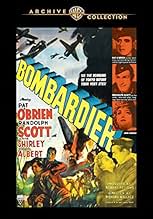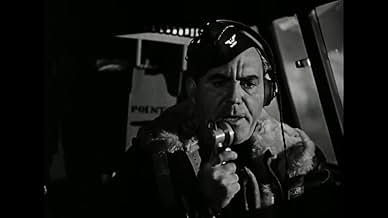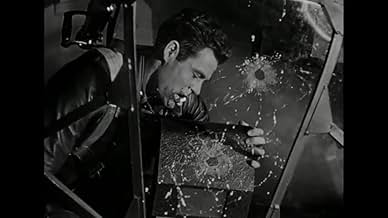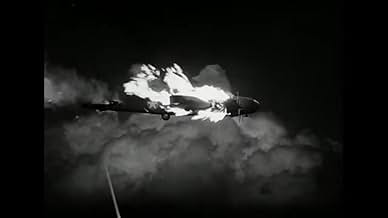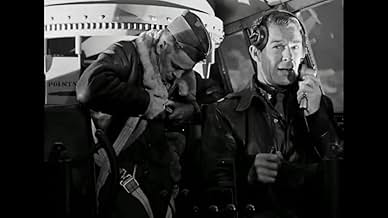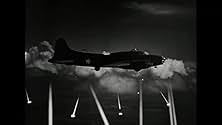अपनी भाषा में प्लॉट जोड़ेंMajor "Chick" Davis is convinced that high-level bombing will win the next war. He convinces the powers-that-be to set up a bombardier school. He efficiently sets about training the USAAF's ... सभी पढ़ेंMajor "Chick" Davis is convinced that high-level bombing will win the next war. He convinces the powers-that-be to set up a bombardier school. He efficiently sets about training the USAAF's first generation of high-level bombardiers.Major "Chick" Davis is convinced that high-level bombing will win the next war. He convinces the powers-that-be to set up a bombardier school. He efficiently sets about training the USAAF's first generation of high-level bombardiers.
- 1 ऑस्कर के लिए नामांकित
- 1 जीत और कुल 1 नामांकन
- General Eubank
- (as Brigadier-General Eugene L. Eubank)
- Little Boy - Spy
- (बिना क्रेडिट के)
- Congressman
- (बिना क्रेडिट के)
- Buck's Secretary
- (बिना क्रेडिट के)
- Soldier
- (बिना क्रेडिट के)
फ़ीचर्ड समीक्षाएं
For fans of WWII war films, especially those set in the world of aviation, it's undoubtedly an interesting movie. It showcases the training required to become a bombardier, with a focus on precision bombing training, a perspective rarely seen before and not replicated in later films. It can provide a complementary view for fans of the celebrated "12 O'Clock High" series, which omits this training aspect in its production.
The narrative is straightforward and linear, with the actors delivering decent performances without any particular standout.
As always, it's intriguing to watch a movie made during the same period as the events it portrays, as it usually features accurate uniforms and vehicles. However, in this case, it's worth noting that the final mission over Nagoya, depicted in the film, couldn't have been carried out by the B-17 bombers shown because it was beyond the reach of Allied bases in the Pacific. This aspect detracts from the film's credibility in portraying the events. In reality, these planes were later deployed in the Mediterranean theater, where they were used extensively.
One surprising aspect of the film is the clear portrayal of the effort to conceal the Norden bomb sight, a targeting system. In reality, the crews were instructed to destroy it in case of bailout. Yet, the film shows it, which might have been seen by enemies. However, the film doesn't reveal the exact workings of the system, so it might have served as a warning to demoralize the enemy. Lastly, when the pilot orders the crew to bail out due to a control failure, in reality, the manual procedure included attempting to restart the engines as a last resort, something not depicted in the film but done by a crew member who chose not to bail out.
Overall, it's a fairly decent movie with good shots for its time, although it doesn't particularly stand out in terms of cinematic quality.
"Bombardier" tells and shows us the early days of training for this new position in the Army Air Forces – precursor of the U.S. Air Force. As such, it's a good educational piece for the public, then and now. The men who went into combat in different roles weren't tossed together and sent into combat. They were trained first. And for some fields, the training was highly specialized and detailed. This film shows very well that detail, study and science that went into the training of bombardiers. These men indeed played a critical role in destroying enemy armament production, fuel depots and major supplies – and in so doing, helped end the war much earlier than it would have otherwise concluded.
Many have said it since the first attribution to Civil War Gen. William T. Sherman, that "War is hell!" But once a nation is in a war, it should do everything possible to end it as soon as possible.
Many war movies have been made, especially about the two "great" world wars of the 20th century. They have variously focused on the action of troops in battles, assaults from the sea, naval engagements or air combat. Most give us a picture, however much Hollywood may "tweak" it, of the human conditions, relationships, and characters. Often times they include the strategic plans of real battle scenes. These are the things that most interest people, or "entertain" audiences for this genre. But films such as "Bombardier" add another value in educating and informing the public of what went into the readying of our nation for war, and our ability to win and end it as soon as possible.
As an Army paratrooper veteran, I enjoy learning about the "how-to" that men and women learn in the different combat and support specialties of our armed services. People who approach war movies in a similar frame of mind will be much more likely to enjoy them. I highly recommend "Bombardier" as an informative, action-filled and historical war movie.
क्या आपको पता है
- ट्रिवियाThe American bomb sight mentioned throughout the movie was the Norden bomb sight whose secret was almost as closely guarded as the development of the atomic bomb. It used a mechanical computer and linkage to the plane's autopilot to achieve an accuracy of hitting with 75 feet of the target from an altitude of 12000 feet. All members of the bomber's crew were ordered to destroy the sight at all costs if the plane was going to crash. Many ships carried a hand grenade to place under the sight to assure total destruction. It was used as late as 1967 to drop sensors along the Ho Chi Minh trail in Viet Nam.
- गूफ़The Douglas B18's, Beechcraft AT11's and B17 aircraft all sport national markings found from May 1942 until June 1943, yet a considerable part of this film takes place before Pearl Harbor.
- भाव
Burton Hughes: You're quite an entomologist.
Sgt. Archie Dixon: Nope! But I know all about bugs.
- क्रेज़ी क्रेडिटBrigadier General Eugene L. Eubank is billed first because he is credited in the forward before any cast is mentioned, and he is not listed in the comprehensive end credits.
- इसके अलावा अन्य वर्जनAlso available in a computer colorized version.
- कनेक्शनReferences अलविदा, श्री चिप्स (1939)
- साउंडट्रैकSong of the Bombardiers
(1942) (published title)
On-screen title: "Song of the U. S. Bombardiers"
Music by M.K. Jerome (as M. K. Jerome)
Lyrics by Jack Scholl
Played during the opening and closing credits and often in the score
Sung by the audience at the magic show
टॉप पसंद
विवरण
- चलने की अवधि1 घंटा 39 मिनट
- रंग
- पक्ष अनुपात
- 1.37 : 1
इस पेज में योगदान दें



